| Back to Back Issues Page |
 |
|
Bangkok Travelbug November 2018 A Weekend in Phitsanulok November 03, 2018 |
| Hello
Brief History of Phitsanulok Phitsanulok is a very old city; like Lopburi it was one of the fringe provinces of the Khmer Empire around the 9th to 12th C. This makes Phitsanulok older than Sukhothai which was established in the 13th C. Several kings of Sukhothai have ruled from Phitsanulok. This was because its strategic location to the north of the Chao Phraya basin made it critical for guarding against invasions from the northern highlands. The city is located on the Nan River which joins up with the Yom River from Sukhothai and later the Ping River from Chiang Mai to form the Chao Phraya at Nakhon Sawan. 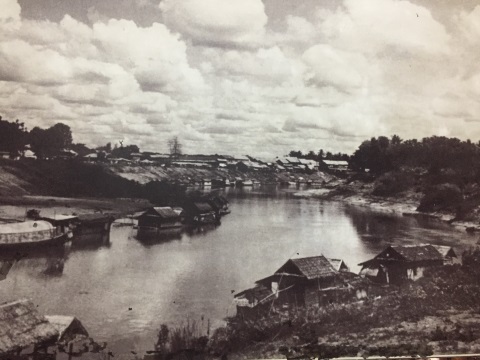
Phitsanulok on the Nan River 1957 photo courtesy of the Sgt Maj Thawee Folk Museum, Phitsanulok This was an important tactical advantage in the days when most movement of troops and supplies was along waterways. From Phitsanulok, one could sail all the way down to Ayutthaya. As a result, Phitsanulok was involved in several wars between Sukhothai and Ayutthaya and later between Ayutthaya and Lanna and Burma. It was also a centre for religion with several famous temples with revered Buddha images installed in them. Trading ships from Ayutthaya stopped at Phitsanulok because the water further upstream were too shallow, thus making Phitsanulok a trading centre as well. King Borom Trailokanat ruled in Ayutthaya from 1448 – 1463, from 1463 – 1488 he moved his capital to Phitsanulok. He built the city walls to promote it as the second capital and restored several temples as well. The city walls were built with bricks made from soil similar to that of Sukhothai. The walls were reconstructed by King Chakkraphat (1548 – 1569) and again by King Narai (1656 – 1688) with the help of French engineers. 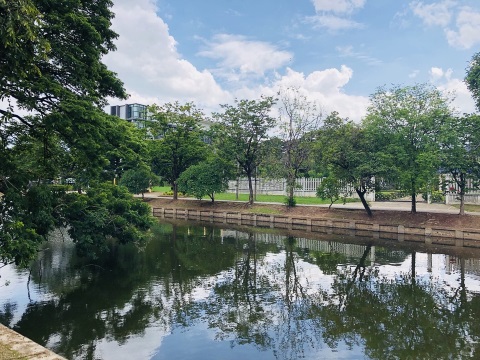
The moat – photo taken from outside the old city King Rama I ordered the walls and fortresses to be pulled to prevent the Burmese from using the city as a fortified base against Siam. All that remains of the old city walls are two short stretches along Phra Ruang Road. 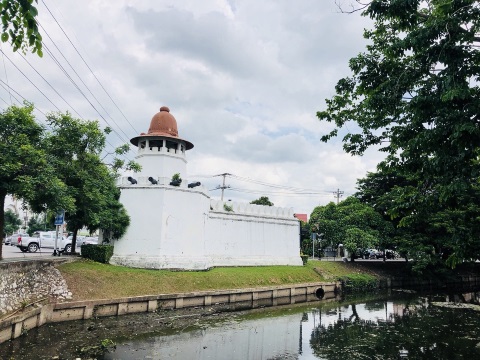
Remains of the old tower and city wall 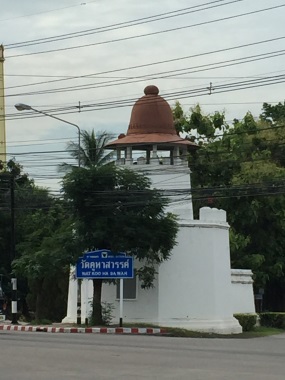
Remains of the old tower on the other side of Phra Ruang Road Phitsanulok was accorded the status of province in the reign of King Rama VII (1925 – 1935). Contents Wat Ratburana Wat Ratchaburana is an ancient temple dating back to the Sukhothai era and has several ancient relics and structures. 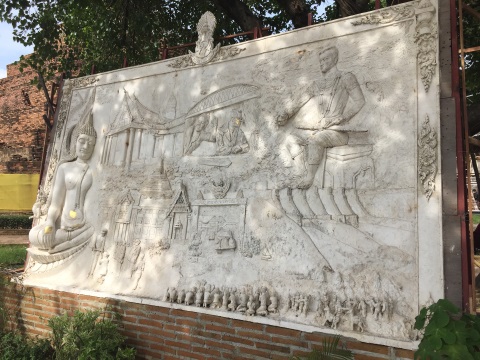
Sculpture in bas relief at the entrance to Wat Ratchaburana The broad based chedi in Sukhothai architecture is a prominent landmark. 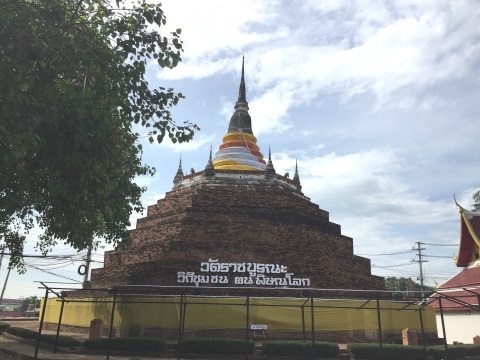
The old chedi in Wat Ratchaburana The viharn luang houses a 700-year-old golden Buddha image. 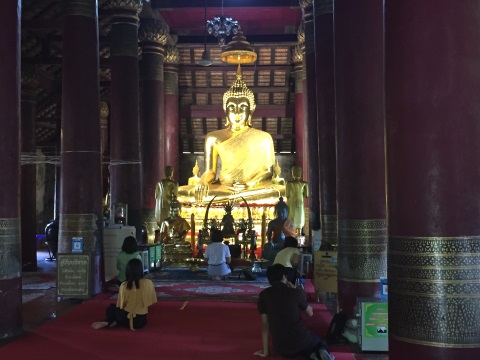
Inside viharn luang The old murals in the ubosot featuring the Ramakien drama were painted in the reign of King Rama IV. 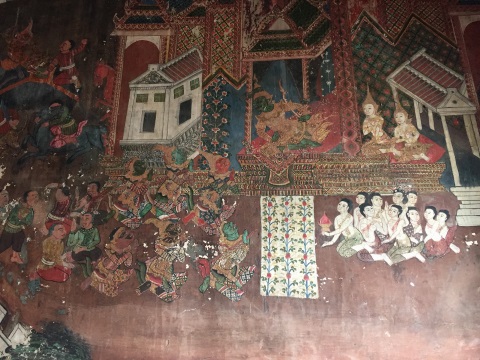
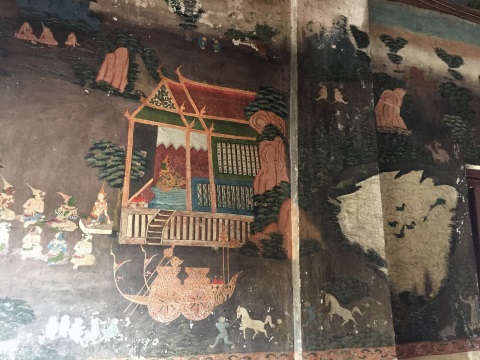
Old murals in the ubosot Another building displays the boat used by King Rama V when he visited Phitsanulok in 1901. 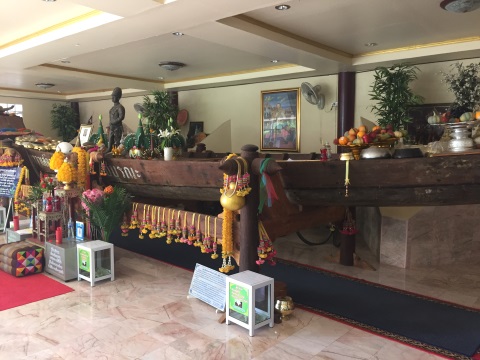
Preserving the boat used in a royal visit Note If you do a search in the Google map for Wat Ratchaburana, Phitsanulok, the pointer will be placed at Wat Nang Phaya which is across the road. This is incorrect; these are two different temples. This is probably because Wat Ratchaburana is only listed in Thai in the Google map and not in English. Contents Wat Phra Si Rattana Mahathat It wasn't easy finding this temple officially known as Wat Phra Si Rattana Mahathat, locally known as Wat Yai and on the Google map as Wat Buddha Chinnarat! We only learned about the local name when we were asking for the way. I remember the bemused look on the person's face after I mentioned the long official name. "Oh, you mean Wat Yai" was the response. Buddha Chinnarat is the name of the revered Buddha image that is housed in this temple. There is an annual festival in January to commemorate Phra Buddha Chinnarat Day The temple was built in 1357 in the reign of Phra Maha Thamma Racha I of Sukhothai to house Phra Buddha Chinnarat, the most famous and revered Buddha image in Thailand. 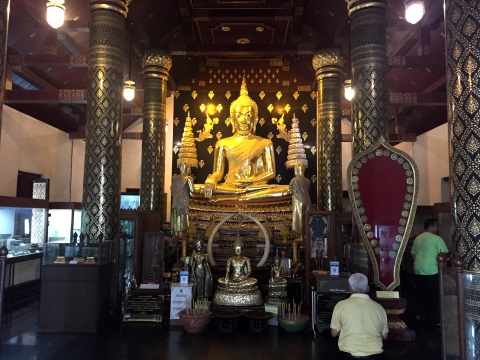
The revered Phra Buddha Chinnarat Behind the ubosot is Phra Attharot, a standing Buddha among some old ruins. In the background is a 36-metre-high prang in Ayutthaya style. 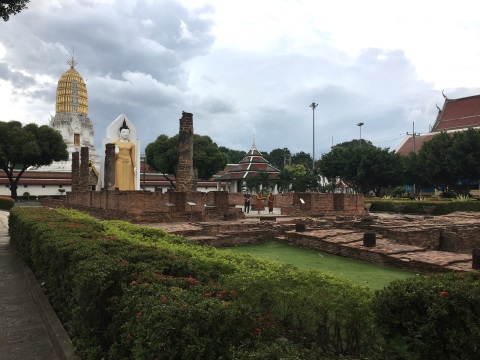
The standing Buddha It was late afternoon, far too crowded and almost closing time, so we couldn't visit National Museum for Buddha Images which closes at 4:00 pm. Contents Raft Restaurants in the Nan River There are at least four raft restaurants in the Nan River in the part of Phitsanulok where we stayed. We tried the Pae Phu Fa Restaurant on the first evening. 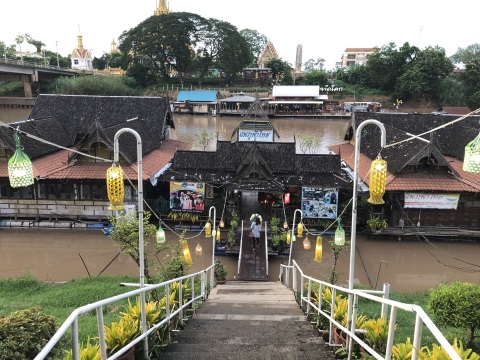
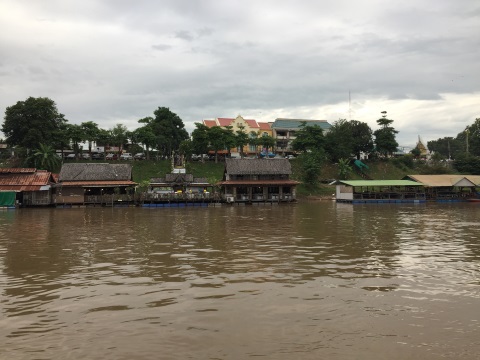
Pae Phu Fa The following evening, we crossed over to the west bank of the Nan to try the other raft restaurant Pae Pid Lok. 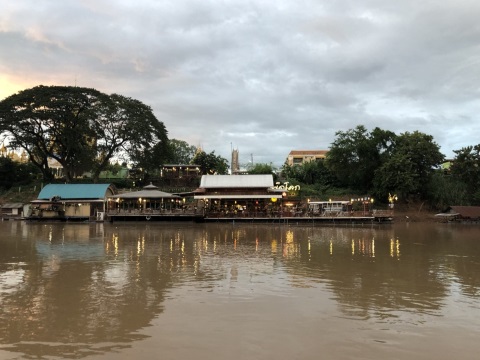
Pae Pid Lok across the river The food was outstanding and the atmosphere very pleasant. 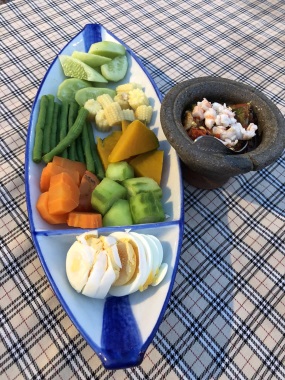
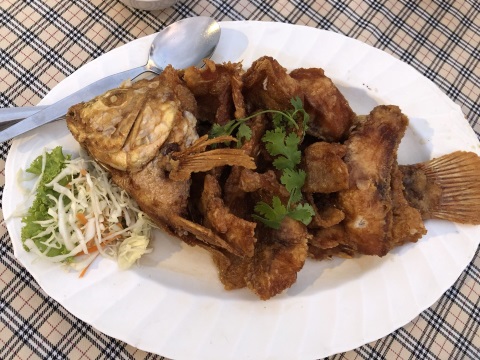
Vegetables with nam prik and deep-fried fish Contents Wat Chan Tawan Tok As we crossed the Suphankanlaya Bridge to get to the west bank of the Nan, we caught sight of this stunningly beautiful temple with its golden spires across the river directly ahead of us. 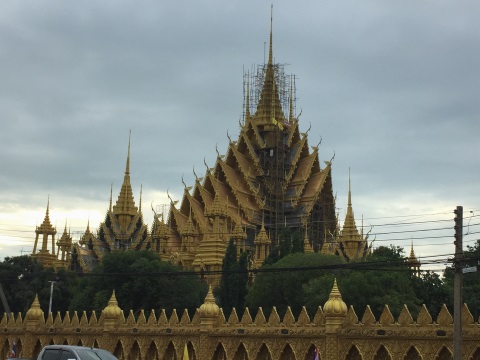
Wat Chan Tawan Tok It was still early for dinner, so we visited Wat Chan Tawan Tok which wasn't planned for. It is a beautiful temple indeed. 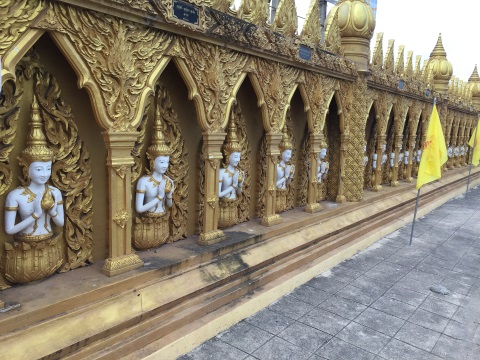
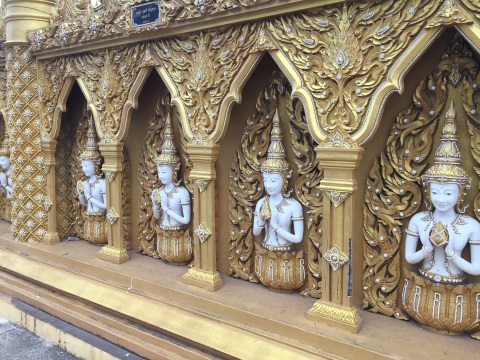
The temple walls 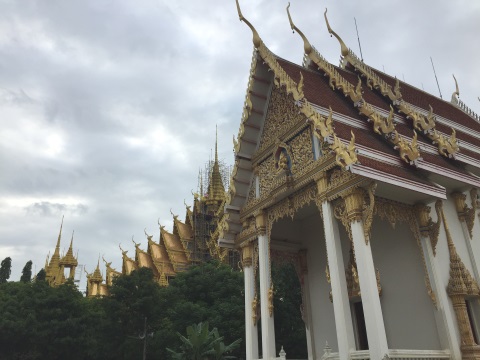
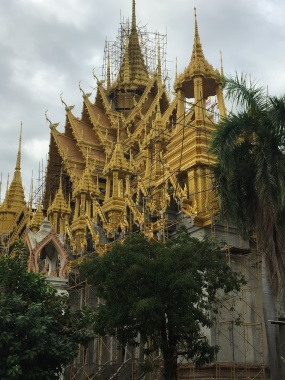
A glittering mass of golden spires Contents Wat Chula Manee Wat Chula Manee is one of the oldest temples in Phitsanulok. The old Phitsanulok Town was believed to be located around here before it was moved to the present location in 1357. We visited this temple on our way home on the last day, as the temple is located along route 1063, the way to the south and Bangkok. The old ruins around the temple grounds look very much like Khmer ruins and give an indication of the age of these ruins. The temple is believed to be built much earlier then abandoned and rebuilt. 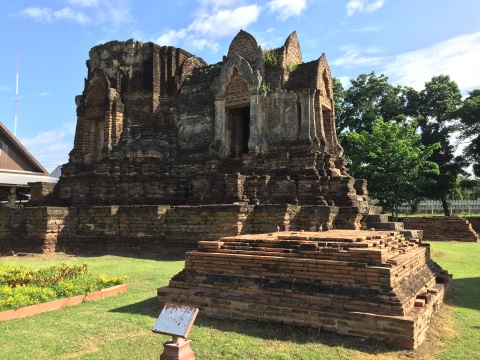
Unfortunately the information boards have completely faded over time King Borom Trailok Kanat rebuilt the temple in 1465 and ordained as a monk here. It was peaceful here with not many visitors unlike the other temples we visited earlier. The clear blue sky made a perfect backdrop for photo taking here; a fitting end to a wonderful weekend. 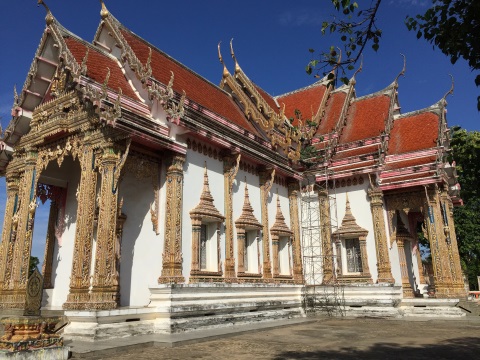
The ubosot 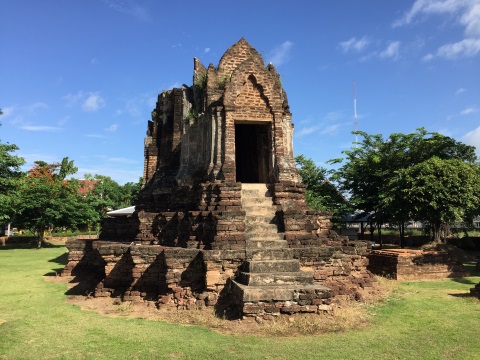
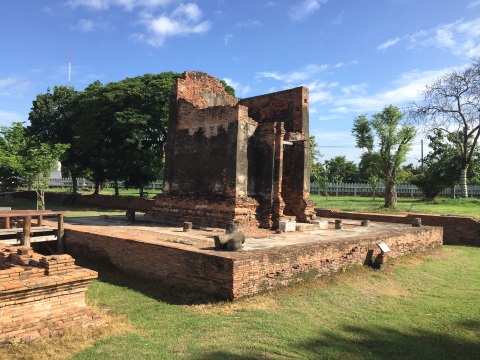
A mix of old and new in Wat Chulamani Now it's time to hit the road for the long drive back home. See you next month 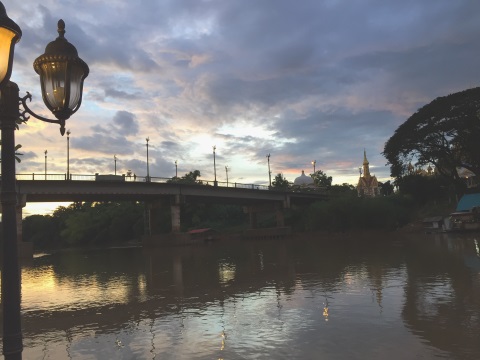
Twilight in Phitsanulok – time to say goodbye Contents Map to Phitsanulok If the map doesn’t appear, click on this link How to get there By car From Bangkok, Don Muang Tollway - highway 1 – highway 32 – Ayutthaya – Ang Thong – Nakhon Sawan – highway 117 – Phichit – past the Naresuan University – Tesco Lotus - route 1058 – Borom Trailokkanat Road Contents Next month Sgt Major Thawee Folk Museum, Phisanulok If you enjoyed reading this e-zine, please forward it to a friend. If you received this from a friend and found it interesting, please subscribe at Bangkok Travelbug. What do you think of the Bangkok Travelbug? We love to hear from you What other subscribers have said Till next month then. Eric Lim Tour Bangkok Legacies Find us on Facebook My Journey through Thailand Part I The First Steps This is my second e-book and the first in the series of travel journals on my trips to explore the various provinces in Thailand. This edition, which covers my travels from late 2009 to mid-2013, will guide you to historical sites, cultural monuments and exquisite Thai handicraft, across a vast spectrum of cultural and ethnic diversity. You can have a virtual tour with this e-guide book or take the first steps yourself in this journey through Thailand. My Kindle e-book 
Copyright@2008-2018 Tour Bangkok Legacies All rights reserved
|
| Back to Back Issues Page |
